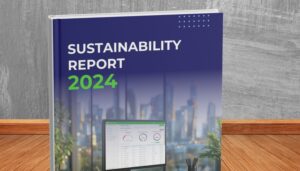
Presented by Jill Kurtz
Director of Building Sciences at Page
LEED QAQC: Invest in QA to streamline QC
Intention requires rigor. We can have the best of intentions, but it requires rigor to make sure we follow through.
A perfect example of this is the ADA code which is a civil rights issue: how do we make sure that everyone has access to our buildings? Everyone agrees this is something that needs to be addressed, but it took something like the ADA code to help us quantify and measure it. And no one loves designing to the ADA code, but that’s the kind of rigor we need to make sure we’re following through on our intentions.
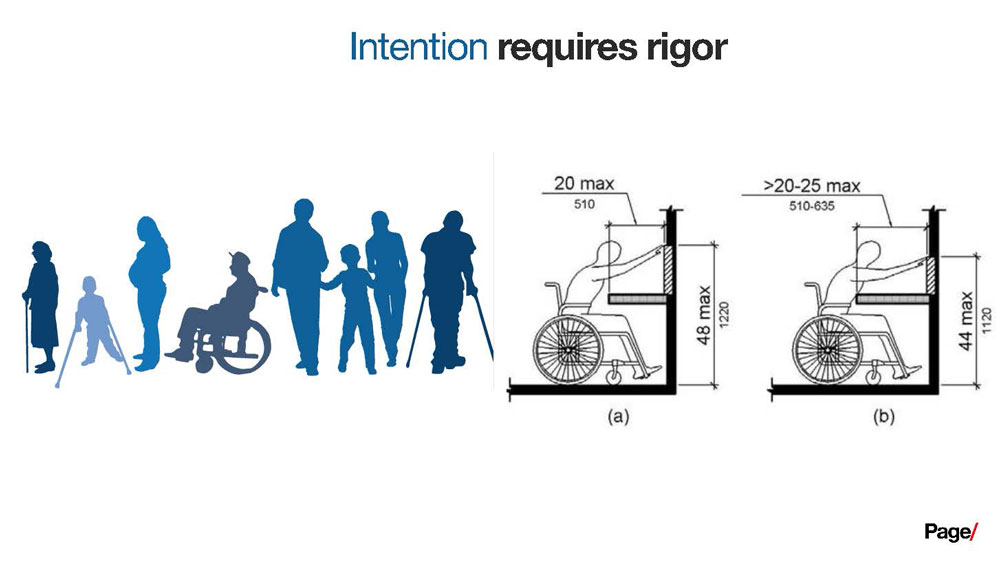
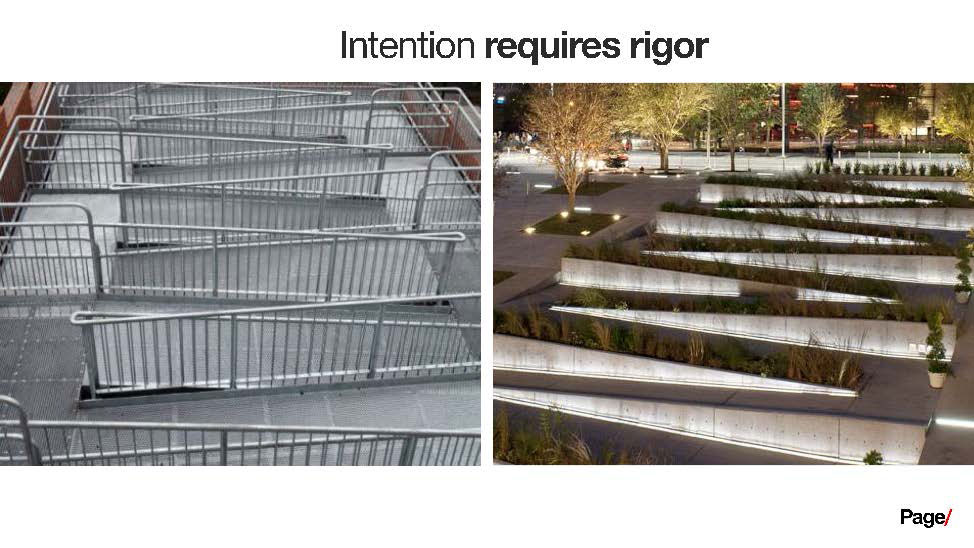
We can either use it as a crutch and design something like on the left (see above), or we can use it as a tool to make our spaces better.
At the end of the day, that’s how I always try to talk about LEED. We know our intentions are to design higher performing, healthier, and more resilient buildings. But it’s complicated and we don’t always know what ‘good’ is, so we use tools like LEED to help us build the rigor. It’s important for me to put this into context because as we do this work we know we’re trying to follow through on big intentions.

QAQC
As it related to LEED, the other big picture to mention is that we often refer to QAQC as one thing: “Did you QAQC it?” But in practice, QA is very different from QC and the nuances there are what matters.
Quality Assurance
Quality assurance offers the tools and processes that we try to set up from the beginning to prevent issues later on in the project. They should be performed and executed in parallel with the project.
Quality Control
Quality control is really the backend. How do we fix things that might have broken along the way? What are the corrective tools, and how can we fix any issues that come up?
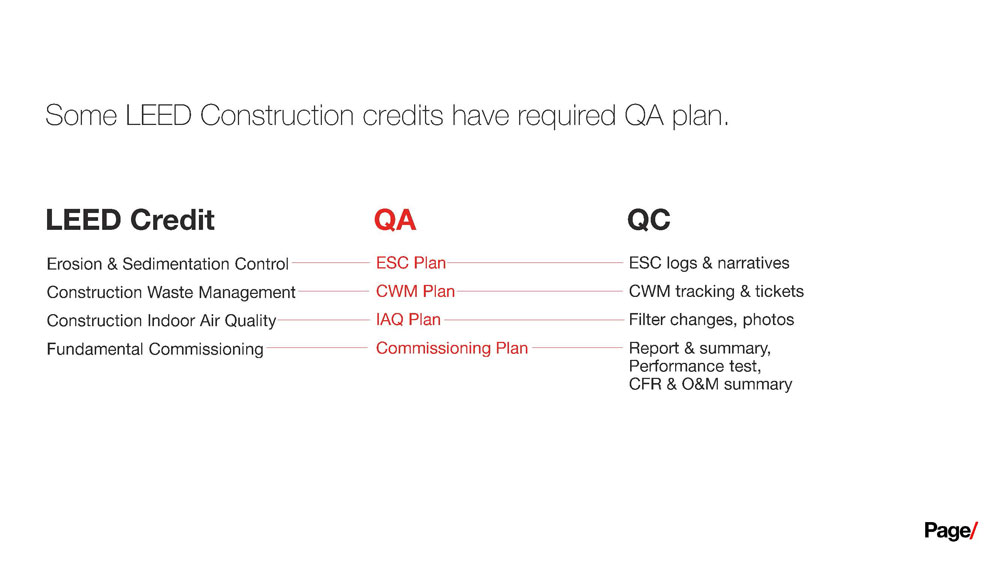
QA and LEED Construction Credits
The distinction between QA and QC is important when it comes to LEED because a lot of the LEED construction credits have a QA component built into them. The credits listed bellow all require as a part of the documentation that we put a plan together. A big part of what we need to do for Erosion and Sedimentation control isn’t just the logs and narratives, it’s the erosion and sedimentation control plan set up by the civil engineer.
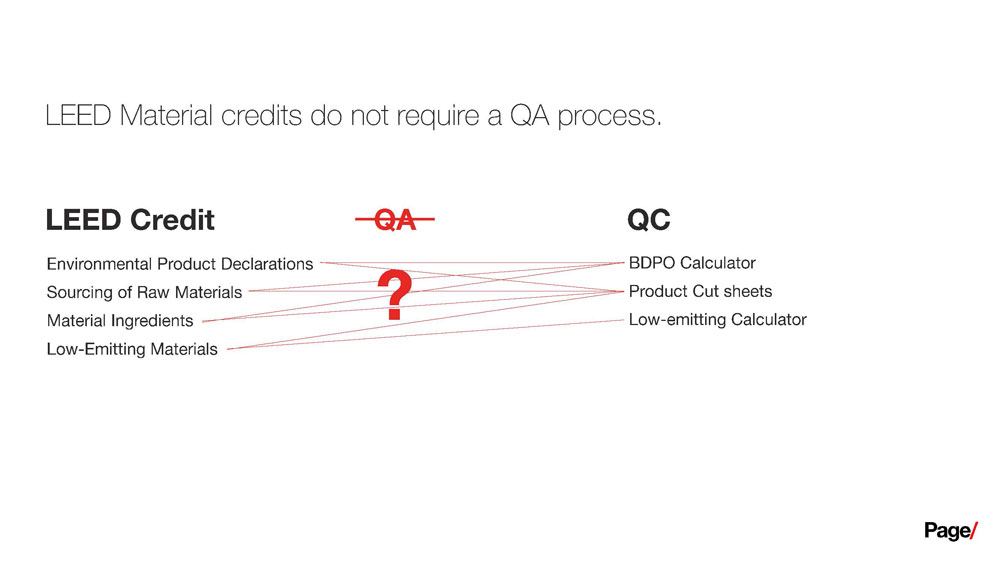
QA and LEED Materials Credits
Part of the problem we run into is that there aren’t any requirements for QA built into the LEED BPDO credits. There’s nothing that says we need to put a plan in place. We know what credits we want to track and we know what documentation we’ll need at the end of the day, but we don’t often do a good job of connecting the dots and putting a process together.
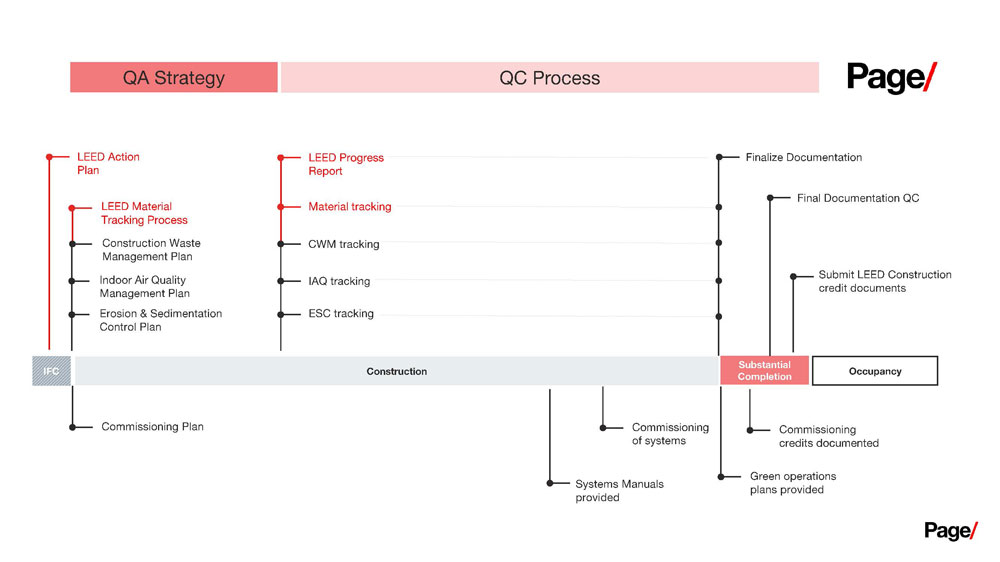
Connecting a QA Strategy to your QC Process
On the design and engineering side, we do a BIM/LEED kick-off meeting we try to set up a plan and put a process in place to make sure we have all the documentation that’s required. Ideally there would be a single plan, but depending on the client or the project there may be a few tools that are helpful to pull together.
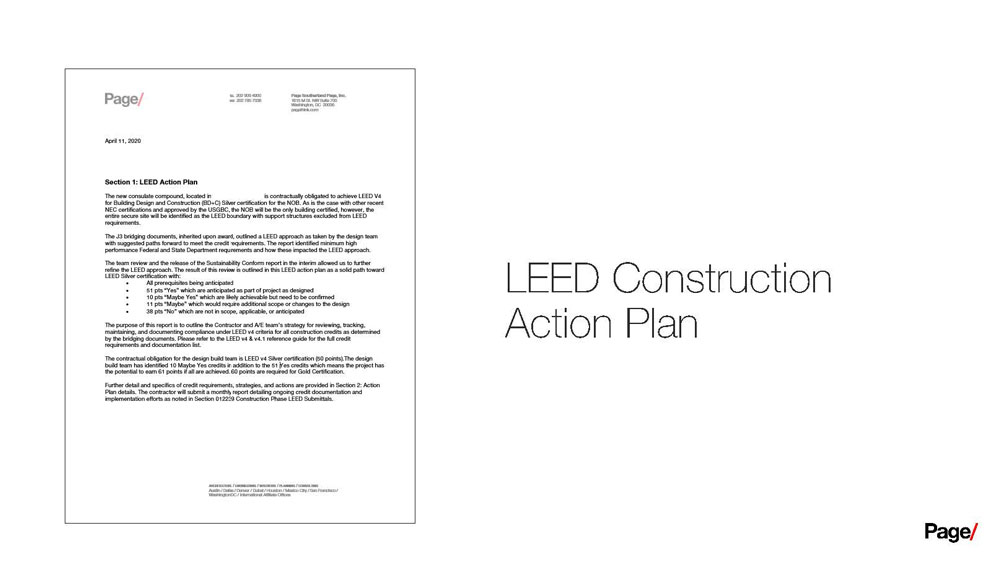
LEED Construction Action Plan
A LEED construction action plan is required when we work on government projects, but we use it in other cases as well. When we work on design-build projects where we’re involved early on we can work with the contractor to make sure we have a plan to move from our early LEED Scorecard to a full resolution at the end of the project.

Identify Responsibilities
Make sure your team is clear on who is in charge of what. I’m the daughter of a contractor and a recovering architect so I feel very strongly that we can’t as designers just ask the contractors to just go figure it out. If we haven’t done our own work in verifying what product we’re selecting or setting goals or specifying products that comply. Understand who needs to do what for product selection and the submital handoff process.
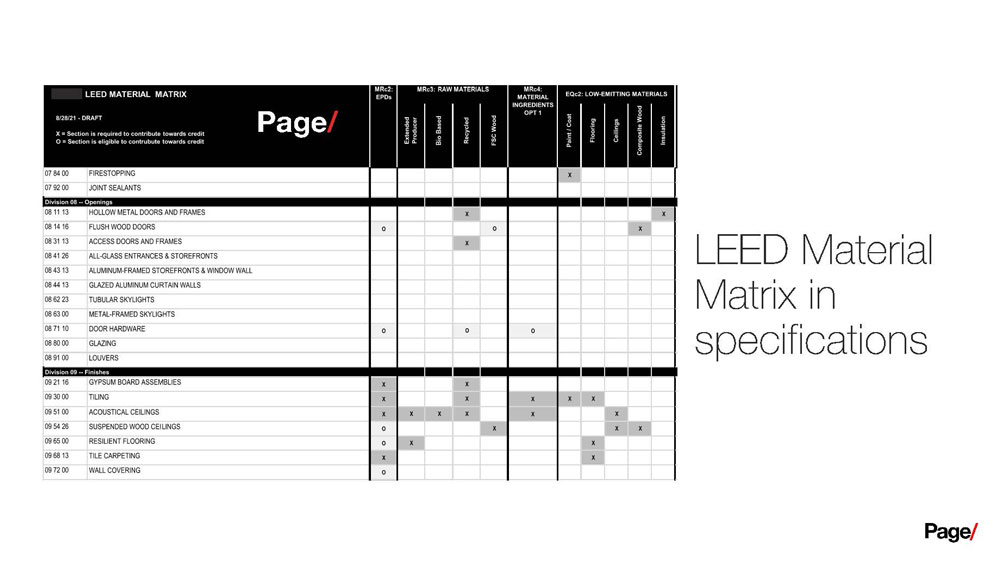
LEED Material Matrix in Specifications
One of the tools we’ve developed at Page is a LEED material matrix. This is a map that we include in our up front specification. This tells the contractor that while we’ve put a lot of LEED info into the technical specification sections, we didn’t put it everywhere and this is where you’re going to find it. We try to do a scalpel and not a sledgehammer… While we could be more proactive and include it in every spec section, we often find that if the information is in every section it’s harder to get it at all.
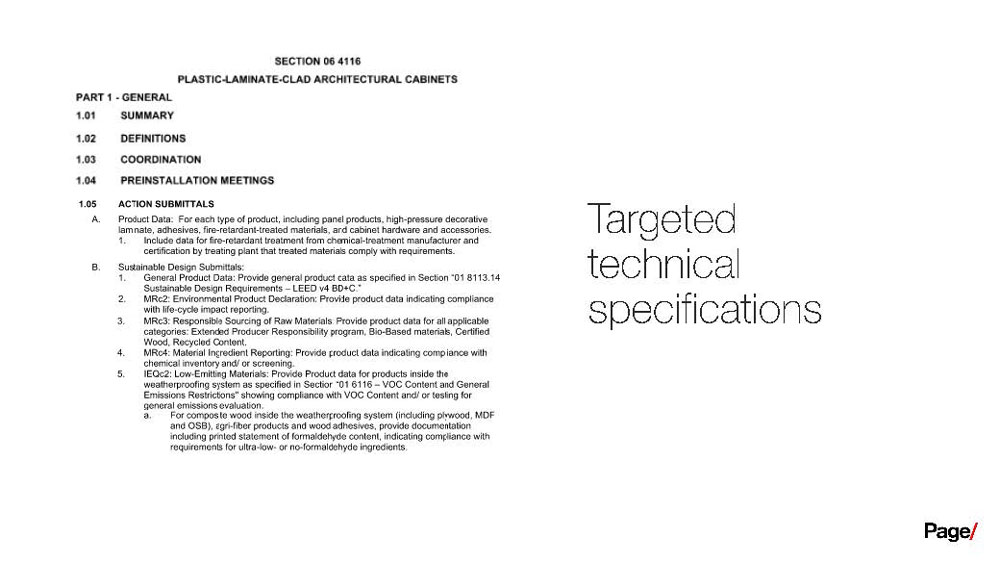
Targeted Technical Specifications
Figure out how to embed your LEED information into the specs. We don’t tend to put it in Part 2, we include it up front in Part 1 to say what submittal information is needed. Just like the LEED materials matrix works well for the contractor, it also works well for my spec writer because I can tell them to add that language for those specific LEED credits instead of including all of the LEED requirements for every spec section.
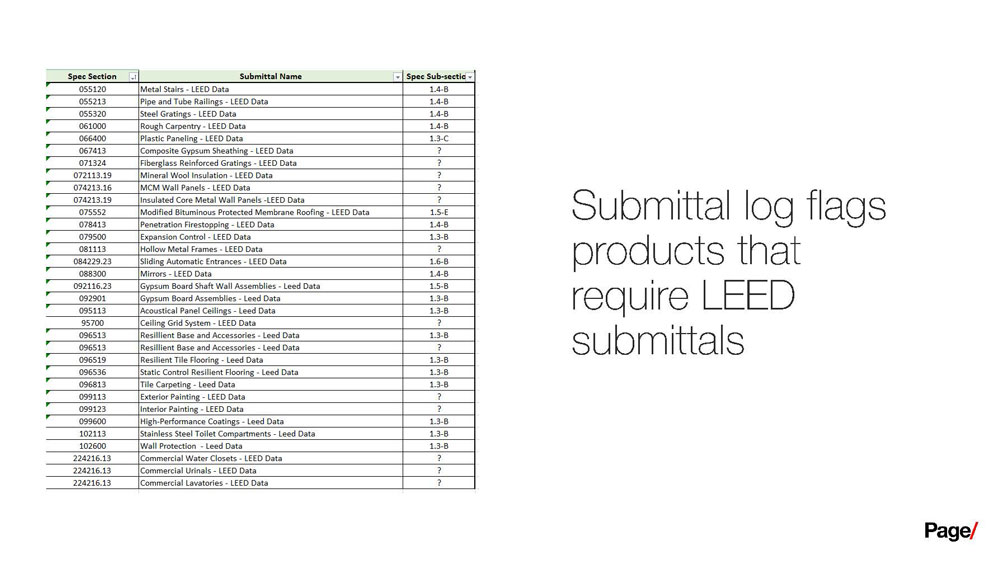
Submittal Log flags products that require LEED submittals
One thing that we’ve found is helpful is letting the contractor know where they need to capture LEED data. Of course we want to see this with the product data, but we also want to catch it in case it gets missed in the product data. Sometimes, submittals won’t get routed to us if they don’t have LEED data in them, so if a submittal should have captured LEED data but didn’t it might never cross our desk. We flag those sections in our submittal log to say that there should be LEED data so we can make sure we don’t miss anything.
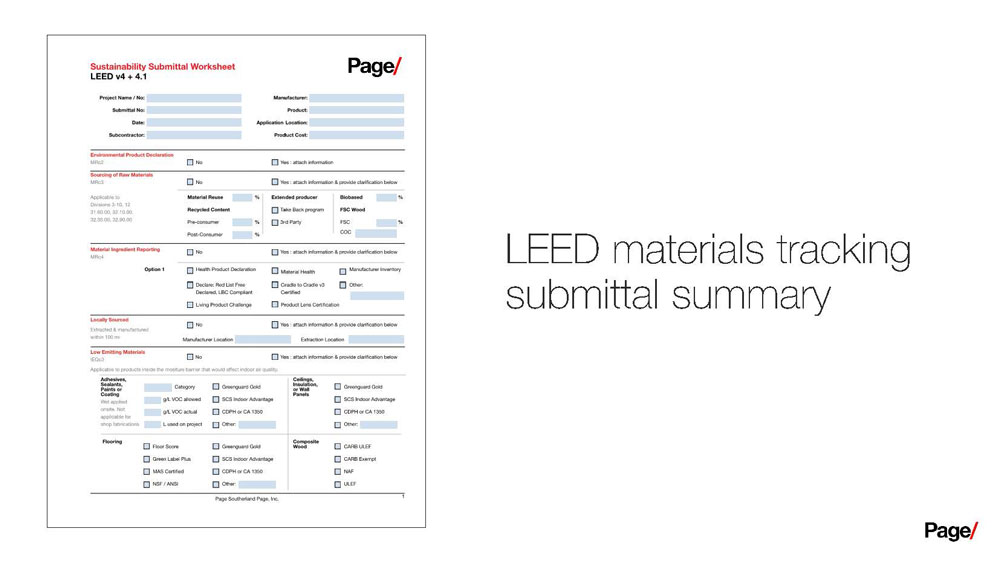
LEED Materials Tracking Submittal Summary
Another process we try to employ is using a LEED submital worksheet. It’s a coversheet that functions as a great QC for our subcontractors to make sure they’ve captured all the relevant LEED data. Sometimes we’ll try to customize this to reflect the actual credits that the project is going after. The materials coversheet becomes a great tool for the general contractor to use so they can plug the LEED data into their tracking tools.

LEED Materials Tracking
Whetehr your general contractor is using the USGBC LEED calculators or are tracking offline in LEED tracking spreadsheets (at Page we’ve created our own tracking spreadsheet the the contractor can use to track along the way), or if they’re using Green badger they can take the data from the LEED submittal coversheet and align it with what’s in Green Badger.

LEED Construction Check-ins
Another part of our QA process is construction check-ins. We try to be flexible to how many action items we’re actually tracking. As with anyone managing the LEED process, at Page we have our own interactions of these spreadsheets to track how the project is meeting LEED construction credits. Our spreadsheet includes:
- What is the status
- What is the strategy
- Who owes who what so we can follow through on it
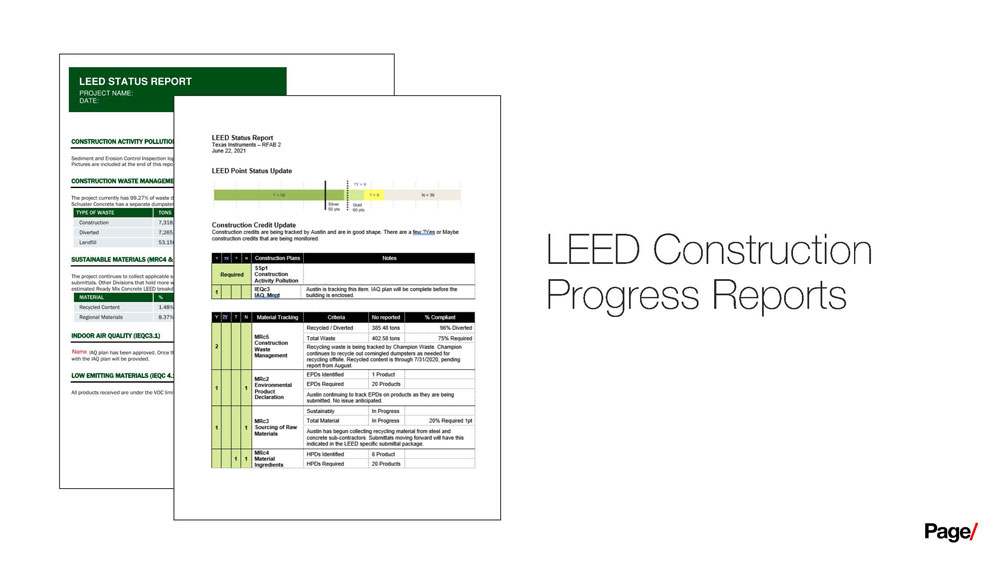
LEED Construction Progress Reports
The last tool we find helpful in this process is a LEED construction progress report. This is a great document to share with the project owners who aren’t involved with the day to day of LEED tracking to see where we’re at. When we use Green Badger, this is also super easy to pull off of the project dashboard.
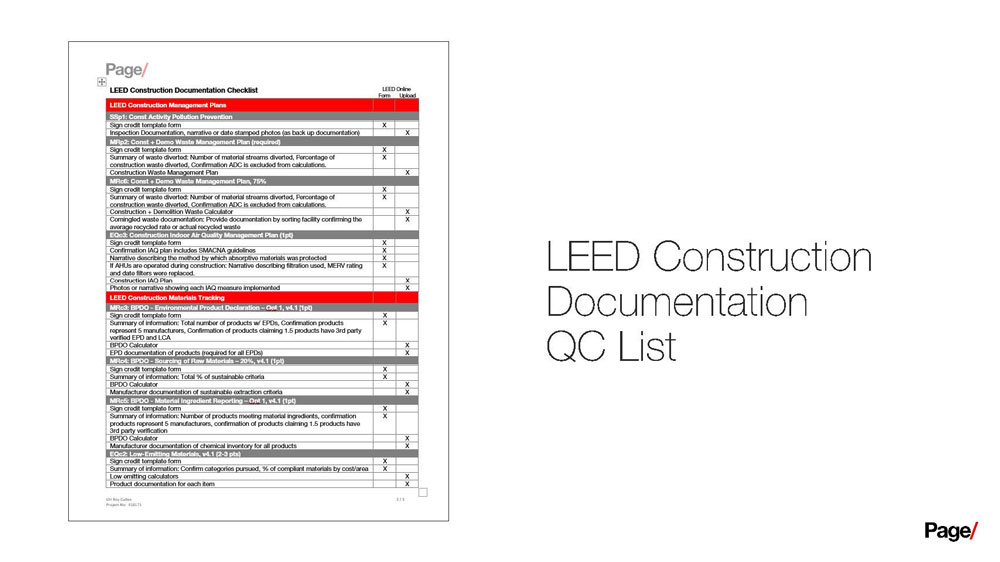
LEED Construction Documentation QC List
When it comes time to document everything, what is the final list you’re working off of? You can’t just go to LEED online and hit complete. There are templates you need to upload and backup sheets that need to be provided, so make sure everyone is clear from the beginning so at the end you can ensure that you’ve done everything you said you were.
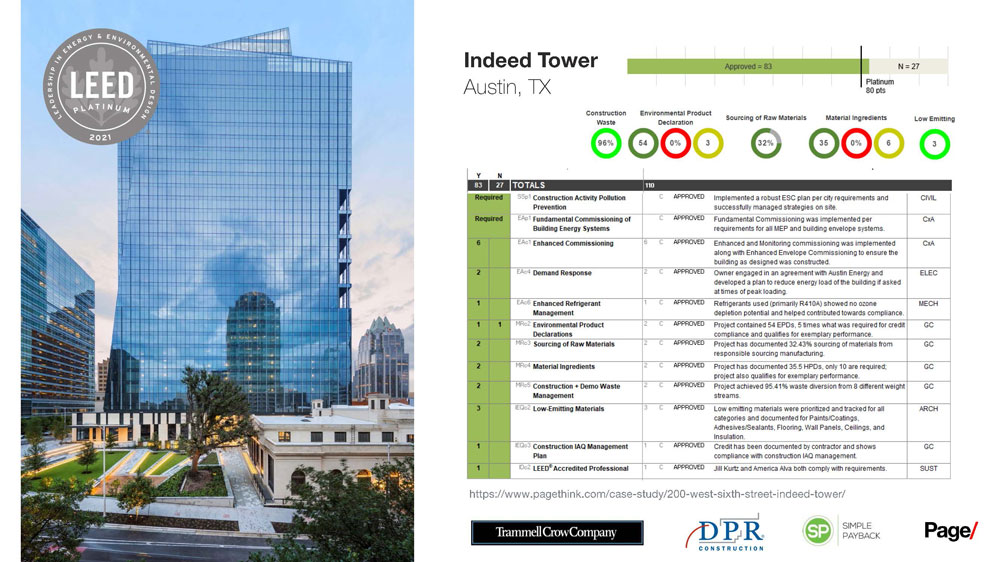
Example of a Recently Certified Project
Project: Indeed Tower in Austin, Texas
General Contractor: DPR Construction
Owner: Trammell Crow Company
Commissioning Agent: Simple Payback
Our team did such a great job making sure we had process in place from the beginning. We still got a few LEED review comments, but there were easily addressable.
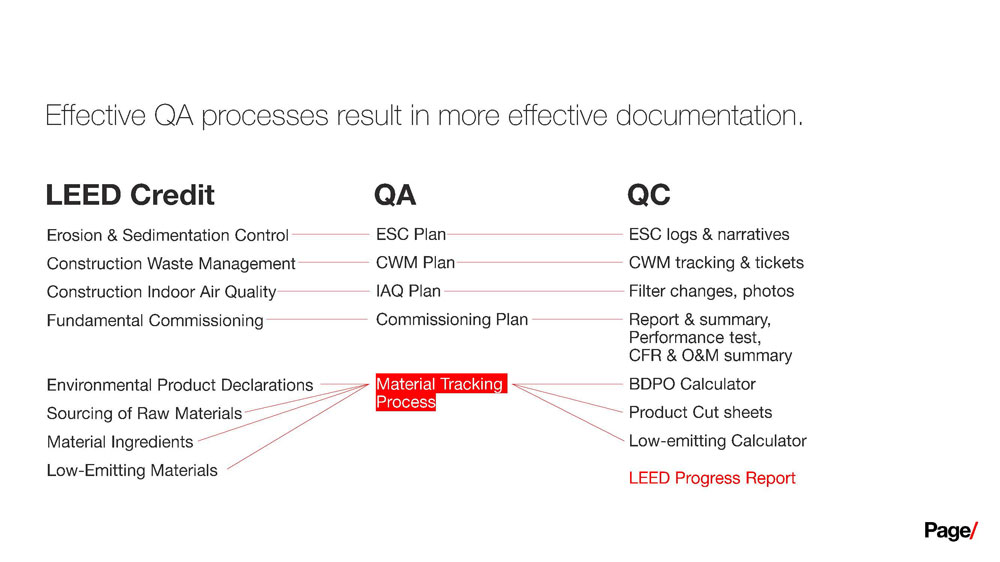
Effective QA Plans result in more effective documentation submittals
Being more effective and strategic with quality assurance plans will result in more effective documentation submittals. We’ve seen that model work for all the other LEED construction credits, and we need to learn how to do that better for our materials tracking process as well.




